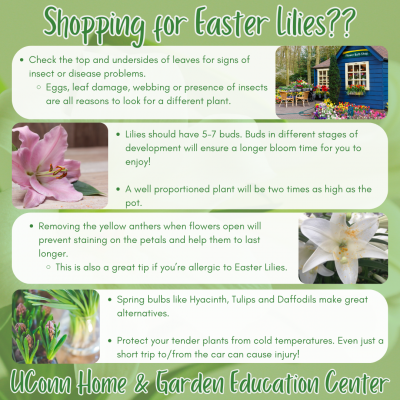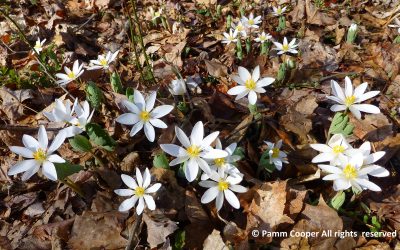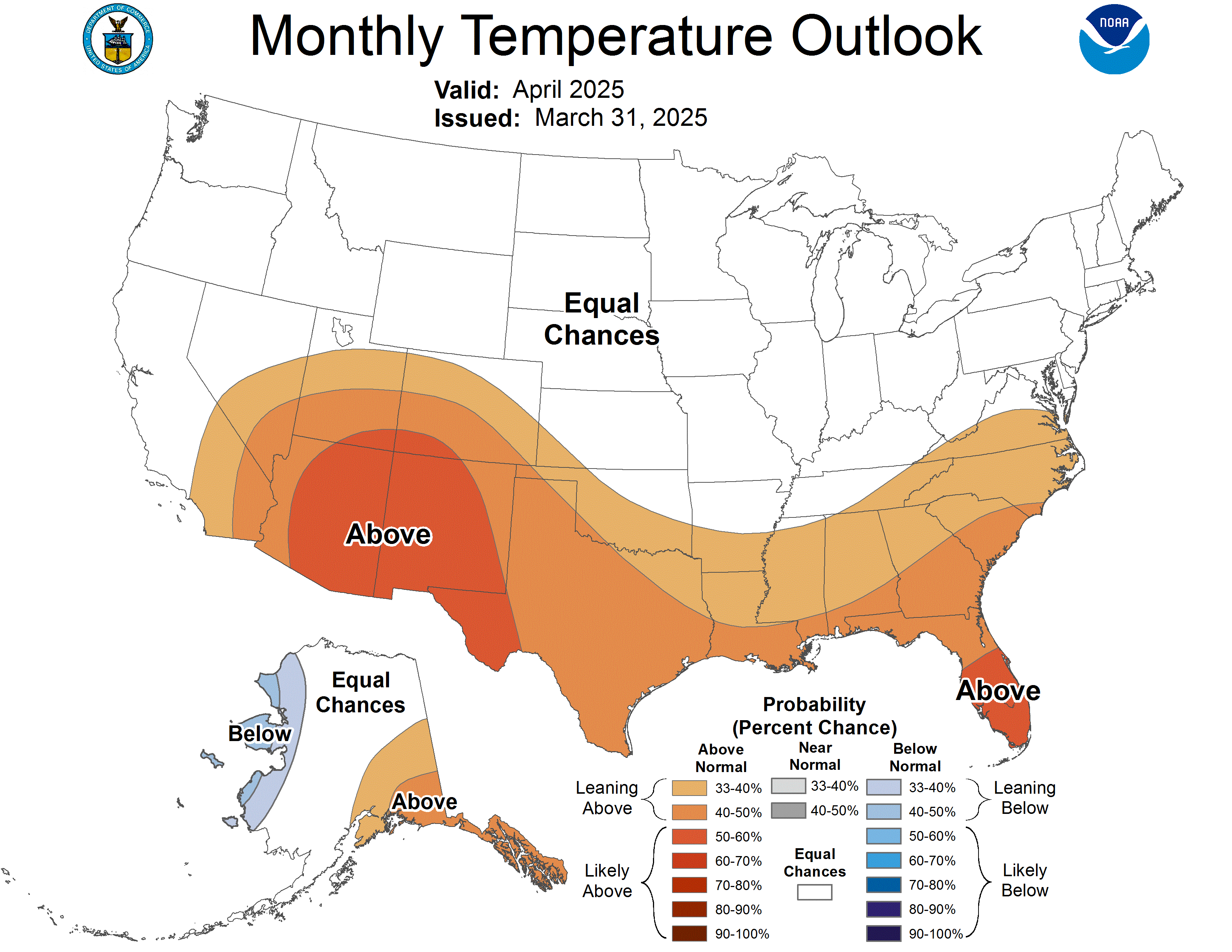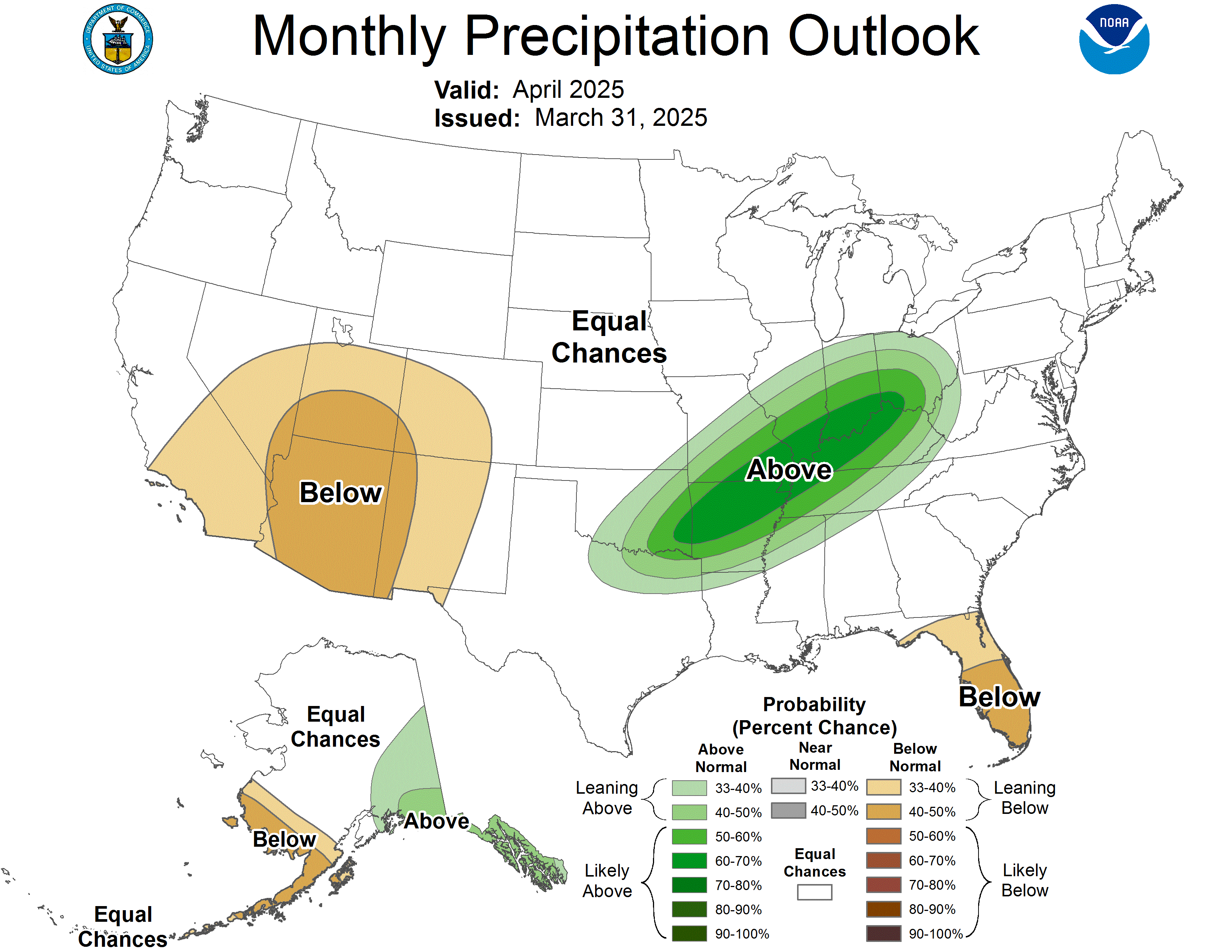
“In the spring, at the end of the day, you should smell like dirt.”
— Margaret Atwood
Get Your Plants Outside Earlier with Cold Frames!
Cold frames act as small greenhouses, allowing you to get an earlier start on your garden in the spring and harvest produce later in the fall as temperatures begin to drop. These structures allow light in through clear covers while protecting plants from the elements – namely cold weather. The cold frame is heated by the sun during the day and at night, heat is radiated inside to keep plants warm. Cold frames can be constructed from a variety of materials to form the basic components of a frame and transparent covering.
These structures also help gardeners to "harden off" seedlings - a process which helps them adjust from a controlled indoor environment, to a more variable outdoor environment.
Hardening Off Vegetable Seedlings
Building and Using Hotbeds and Cold Frames
Easter Lily Selection & Care

With its namesake holiday approaching, the demand for Easter lilies is rapidly increasing!
While inside your home, choose a location which provides bright light but is out of direct sunlight. Ensure that watering is done when the soil surface is dry to the touch.
These are not pet-safe plants! Keep them out of reach from your furry friends.
When danger of frost has passed, Easter lilies can be planted outdoors. Plant your lily in a location with full sun and sufficient drainage.
Selection and Care of the Easter Lily
Native Plant Highlight: Bloodroot
Bloodroot is a native spring ephemeral that is one of the first wildflowers to bloom. Many native bees that are active in early spring benefit from a nice stand of this plant. Its common name refers to the blood-red color of the underground rhizomes.
Word from the WiSE
How ‘beneficial’ are the microbe blends to your soil, as well as your plants?
Microbial additions are being discussed increasingly, and they are starting to show up on sites, such as Amazon, easily accessible by the average home grower. The big question is: are these additions and blends aiding your soil, or are they just another sales pitch? Microbial additions greatly benefit your soil, because they aid in multiple essential functions within the soil, including cycling nutrients, breaking down organic matter within the soil, and helping your soil stay healthy. These additions can also be a benefit to your plants by helping them absorb more nutrients, as well as encouraging growth, and possibly even disease suppression! Microbial additions are truly ‘beneficial’, and should be considered this spring season!
Knowledge to Grow On
Upcoming Events and Things to Do
- CT Horse Symposium - April 5, Storrs, CT
- Earth Day is April 22nd - Celebrations are happening statewide! Check with your local municipality, nature centers and parks to see what events they have planned.
- Arbor Day is April 25th - Visit one of CT's many recognized Tree City USA sites.
- Tour the UConn Arboretum and visit our collection of specimen trees!
- Earth Day Bird Walk - April 26th, Hartford, CT
Educational Opportunities & Workshops
- Food Waste Solutions April 3, Virtual Event
- Lecture: Summer Annual and Biennial Weeds April 12th, Stamford, CT.
- Oh! What I didn't Plant with Nancy DeBrule-Clemente sponsored by the CT Horticultural Society, April 24th via Zoom
- Attend a UConn Master Gardener Course! (Various dates and various locations)
April Gardening Tips
- Freezing temperatures don’t harm pansies, but if they have been grown in a greenhouse they should be gradually exposed to outdoor temperatures before planting.
- Divide overcrowded summer or fall blooming perennials.
- Get your hands in the soil on cold spring days by transplanting houseplants that need repotting.
- Weather permitting, direct sow peas, carrots, radishes, lettuces, and spinach every two weeks through mid-May for staggered harvests.
- Place seedlings in cold frames around April 25 or later to harden off.
- A new generation of Spongy Moth Caterpillars will hatch in late April and begin feeding on the leaves of many tree species. Remove and destroy any egg masses you find on your trees.
- Check fruit trees for Eastern Tent Caterpillars, they emerge around the same time as leaves sprout. Blast nests with a strong spray of water to destroy them.
- Complete removal of diseased, weak, or crossing branches on shrubs and small trees.
- Shopping for native plants for your gardens this spring? Check out the CT Native Perennial, Tree & Shrub Availability List for plant lists and shopping locations!
- Don't wait too long to remove mulches from strawberries. Once the leaves have emerged from under the straw and yellowing is evident, pull the mulch away from the tops of the plants and tramp it down between the rows. Keeping the base of the plants mulched helps keep the berries clean, controls weeds, and conserves moisture.
- Apply pre-emergent crabgrass weed control when soil temperatures reach 50°F. Use a tool like this soil temperature map to track your timing.
This Month’s Newsletter Contributors:
Heather Zidack, Pamm Cooper, Emily Leahy, Zaira O'Leary


